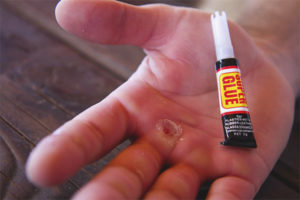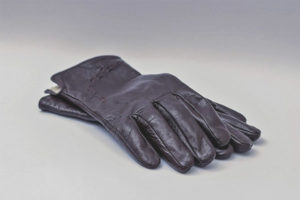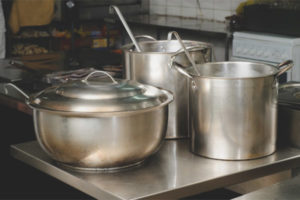The content of the article
Cross-stitch occupies a leading position among home hobbies. Needlework of this kind allows you to escape from unnecessary thoughts, focus on creating a beautiful pattern. Experienced craftswomen decorate blouses, tablecloths with ornaments, create unique paintings and wall paintings. It is difficult to imagine how many crosses artists make in the process of creating a particular product. Embroidery is a delicate decoration, so you need to follow it properly. Consider the important aspects in order.
What is washing for?
It would seem to have finished drawing and dealing with the end. However, everything is not so simple. In the process of creating a unique masterpiece, especially large sizes, dust is clogged into the fiber of the thread, which spoils the aesthetic appearance of the product.
Also, there are cases when traces of hoops remain on the canvas, they can be removed only with wet processing. Among other things, washing eliminates small fibers, traces of sebum, particles of keratinized epidermis.
Proper treatment with water and cleaning products will put the threads in place, remove traces from the marking lines, and give the embroidered pattern brightness and saturation. At the end of the procedure, the canvas will look holistic, without any defects.
Preparing embroidery for washing
- First you need to make sure that the embroidery does not fall apart during the washing process. Turn the product inside out, carefully look at the ends of the threads. It is important to immediately notice if they are not securely fastened, otherwise processing will spoil the product.
- If you belong to novice embroiderers, then you probably didn’t rip off the color pattern completely, sparing the time and effort spent. The remaining loose threads will easily come out if you do not eliminate the error on time. If possible, dissolve 3-4 crosses so that the length of the thread is sufficient for full fixing. Modify the remaining area with new fibers from the skein.
- Turn the product over with the front part, remove thread trimmers, pet hair, etc. You can perform these manipulations using the clothes roller or thin tweezers. Such a move must be made in order to prevent the hairline of animals from rolling off with floss threads to avoid spools.
How to wash cross stitch
Very often, newly-made needlewomen ask the question: “What are the rules to follow when washing cross stitch?”. To make the created pattern pleasing to the eye round the clock, follow the simple recommendations below.
- As mentioned earlier, secure all the protruding threads from the wrong side, they should not hang down and cling to anything. The same applies to the removal of animal hair and foreign debris. When preparation is complete, proceed with washing.
- The temperature regime of water in which the product will be cleaned ranges from 36-40 degrees, not higher. A larger indicator will lead to fading of the pigment, a smaller one will not cope with possible pollution. It is worth recalling that embroidery is a delicate canvas requiring hand washing.
- Prepare a basin or other wide container (a bath or sink is suitable), the main thing is that the product is in a free state. Pour water at the right temperature into the tank, add washing powder for colored clothes, wait for the granules to dissolve. If possible, purchase a gel-based cleaning agent for subsequent washes; it preserves color better and does not leave streaks.
- When the solution becomes homogeneous, put embroidery in it, mix the water so that the accessory is completely drowned.Cover the bowl with cling film, leave for a quarter of an hour. In cases where grease stains are present on the surface of the product, lather the sponge and go over it with dirt. To remove creases from the hoop, take the deformed part of the product in your hands and gently rub the edges against each other, do not allow the threads to be pulled out of the grooves.
- At the end of the period when the soaking comes to an end, drain soapy water and wash the item in the usual manual way. It is strongly not recommended to rub or twist the fabric, as well as to act on it by other mechanical methods, wanting to squeeze out the excess fluid.
- Finish washing by rinsing in contrasting water (first in warm, then in cold). After that, lay the product on a white terry towel, leave to dry naturally. If you want to speed up the process, twist the towel with embroidery in such a way that you get a kind of tube, tube. In this case, do not click on the fabric or turn it into a tourniquet.
- As a rule, embroidery is performed using mouline thread, which has an unpleasant feature for pigment leaching. In this case, you need to rinse until the paint stops draining. To eliminate tarnishing and partial washout of color, use table vinegar with a concentration of 6 to 9%. Add a teaspoon of the solution for every 3 liters of water.
How to iron cross stitch
After washing, embroidery needs to be ironed. The product is ironed while still wet, after all the water has been absorbed into the towel. Carry out processing only from the wrong side, otherwise a characteristic gloss will appear in the picture. Lay a soft cloth on a flat surface, then place the embroidery face down.
Preheat the iron to a medium mark or set the “Delicate fabric” mode. Spread wet gauze over the back of the product, first walk along the edges, then gradually move to the middle. It is important to understand that the final result depends on the correctness of the ironing.
How to wash wool cross stitch
Experienced housewives know that wool shrinks when washed. In the case of cross-stitching, this feature will not benefit, since the product is pulled to the middle and it becomes impossible to smooth it.
It is important to remember forever, processing is carried out only in cold water, nothing else. In this case, purchase a detergent for washing wool products in liquid form, powder granules leave a white coating.
It will be useful to use a fabric softener, which will soften the product and prevent the threads from pulling together. As in previous cases, it is necessary to dry the woolen embroidery on a dense terry towel wound in a tube.
Regarding ironing, ironing is performed on a soft substrate. The embroidered accessory is placed face down, and a damp cotton cloth is applied to the inside. Do not press the iron too hard so that the threads are ironed evenly.
Needlewomen from all over the world are thinking about how to iron embroidery with a cross correctly. The main thing is to choose the optimal temperature regime of water. If the product is made of floss, pay special attention to the rinse procedure. Make sure that the pigment is washed completely. In the case of woolen appliqués, the presence of liquid powder and conditioner for things of this kind plays an important role.
Video: how to wash and dry cross stitch











Submit